
Welcome to eugenesnakes.com! I am David, a snake enthusiast living in Eugene, OR. Many people don't know that Eugene is in fact full of snakes! You just need to know where to find them - they can often be shy and elusive. Some Oregon snake species are more common outside of the city limits, in different parts of Lane County OR, but many types of snakes are indeed common in the more urban parts of Eugene. This guide is meant to help educate you about the beautiful snakes of Eugene, and to help you identify the most common snakes of Eugene, as well as the venomous snakes of Eugene that you should learn to recognize and avoid. If you want more detail, click here for my complete list of ALL snake species in Eugene. Remember the following:
- Most snakes of Eugene are harmless and don't want to encounter you
- Venomous snakes exist but are uncommon in Eugene, Oregon
- Snakes eat rats and mice and are a valuable part of the Oregon ecosystem
- Never kill a snake - if you leave a snake alone, it will leave you alone.
Common Snake Species in Eugene
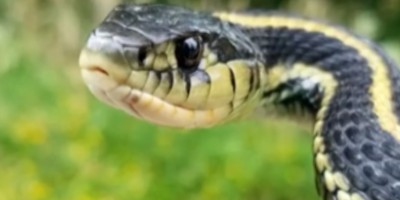 Common Garter Snake:
The common garter snake is one of the most common snake species to be found in Oregon. These snakes are pretty small and only grow to a maximum of two feet long. These garter snakes come in a wide variety of colors, but their typical pattern is a dark body with three yellow or white stripes running down their backs. Garter snakes are often called garden snakes, due in part because they’re frequently found in people’s gardens. Yet there’s nothing to fear from these small creatures, as they’re pretty harmless. These snakes can be found in a wide variety of habitats, including urban areas, forests, and wetlands. Their diet is also varied, as they eat anything from worms to frogs, fish, and even small mammals!
Common Garter Snake:
The common garter snake is one of the most common snake species to be found in Oregon. These snakes are pretty small and only grow to a maximum of two feet long. These garter snakes come in a wide variety of colors, but their typical pattern is a dark body with three yellow or white stripes running down their backs. Garter snakes are often called garden snakes, due in part because they’re frequently found in people’s gardens. Yet there’s nothing to fear from these small creatures, as they’re pretty harmless. These snakes can be found in a wide variety of habitats, including urban areas, forests, and wetlands. Their diet is also varied, as they eat anything from worms to frogs, fish, and even small mammals!
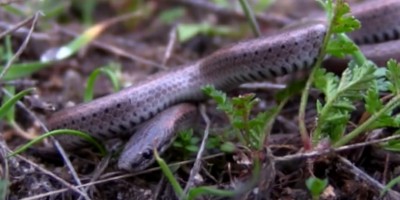 Sharp-Tailed Snakes:
Sharp-tailed snakes are some of the smallest snakes around. These snakes are typically only a foot long. They’re also only as thick as a pen or pencil. These snakes have a dark-colored body, but their bellies are distinct because of the black and white stripes they have. The sharp-tailed snakes are pretty shy, and they spend most of their lives living under logs, rocks, or other cover. As you can imagine, these snakes only prey on tiny creatures. That means they’re mostly reserved for preying on insects. It’s been said that the sharp-tailed snake is particularly fond of small slugs.
Sharp-Tailed Snakes:
Sharp-tailed snakes are some of the smallest snakes around. These snakes are typically only a foot long. They’re also only as thick as a pen or pencil. These snakes have a dark-colored body, but their bellies are distinct because of the black and white stripes they have. The sharp-tailed snakes are pretty shy, and they spend most of their lives living under logs, rocks, or other cover. As you can imagine, these snakes only prey on tiny creatures. That means they’re mostly reserved for preying on insects. It’s been said that the sharp-tailed snake is particularly fond of small slugs.
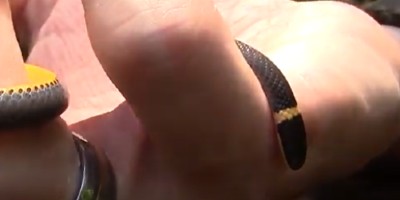 Ring-Necked Snake:
Like the common garter snake and the sharp-tailed snake, the ring-necked snake is quite small. While they can grow up to two feet long, the vast majority are only one-foot long. These snakes are identified by and named after the band they have around their neck. This ring is typically cream-colored, yellow, or orange. It’s particularly notable because it contrasts with the snake’s dark grey, brown, or black body. Like sharp-tailed snakes, the ring-necked snake is frequently found under rocks and logs. In general, however, these snakes tend to live in large, forested areas. These snakes mainly consume insects and slugs, yet they’re also known to go after small salamanders. They’re particularly fond of red-backed salamanders, who they hunt and suffocate before eating them.
Ring-Necked Snake:
Like the common garter snake and the sharp-tailed snake, the ring-necked snake is quite small. While they can grow up to two feet long, the vast majority are only one-foot long. These snakes are identified by and named after the band they have around their neck. This ring is typically cream-colored, yellow, or orange. It’s particularly notable because it contrasts with the snake’s dark grey, brown, or black body. Like sharp-tailed snakes, the ring-necked snake is frequently found under rocks and logs. In general, however, these snakes tend to live in large, forested areas. These snakes mainly consume insects and slugs, yet they’re also known to go after small salamanders. They’re particularly fond of red-backed salamanders, who they hunt and suffocate before eating them.
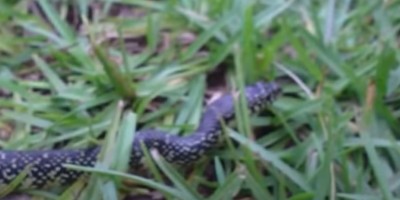 Common Kingsnake:
Describing the common kingsnake can be difficult, as these snakes come in a variety of shapes and colors. They can have black and white rings across their bodies, or they can come in bright shades of yellows, oranges, and reds. Their bright colors occasionally get them mixed up with venomous coral snakes, yet these snakes aren’t actually a threat. Common kingsnakes are medium to large-sized snakes. They’re typically between two and four feet in length. With some adults managing to get up to seven feet in size. The common kingsnake can live in a variety of locations. These include hills, valleys, grasslands, forested areas, and plenty of others. There’s a reason these snakes get the title of kingsnake, and that’s because they’re known to hunt and prey on plenty of other snake species. This snake is well-known for feeding on venomous snake species, to whose venom it’s largely immune. Yet these snakes aren’t too picky, so they’ll also hunt birds, mammals, and amphibians.
Common Kingsnake:
Describing the common kingsnake can be difficult, as these snakes come in a variety of shapes and colors. They can have black and white rings across their bodies, or they can come in bright shades of yellows, oranges, and reds. Their bright colors occasionally get them mixed up with venomous coral snakes, yet these snakes aren’t actually a threat. Common kingsnakes are medium to large-sized snakes. They’re typically between two and four feet in length. With some adults managing to get up to seven feet in size. The common kingsnake can live in a variety of locations. These include hills, valleys, grasslands, forested areas, and plenty of others. There’s a reason these snakes get the title of kingsnake, and that’s because they’re known to hunt and prey on plenty of other snake species. This snake is well-known for feeding on venomous snake species, to whose venom it’s largely immune. Yet these snakes aren’t too picky, so they’ll also hunt birds, mammals, and amphibians.
Venomous Snake Species in Eugene
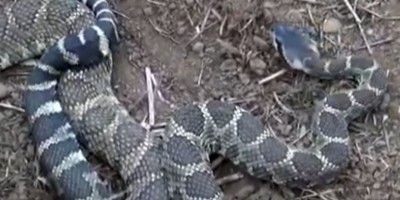 Western Rattlesnake:
The western rattlesnake is a venomous snake that you should stay away from. These snakes are typically three feet in size, though they can grow a bit larger. These rattlesnakes have bodies covered in brown patches of various hues. These snakes typically live in dry areas with plenty of vegetation, as these likely give it cover to hunt its prey from. Like most snakes, the western rattlesnake has a varied diet. This includes mice, rats, and other small to medium-sized mammals. It also includes birds, amphibians, and even other reptiles.
Western Rattlesnake:
The western rattlesnake is a venomous snake that you should stay away from. These snakes are typically three feet in size, though they can grow a bit larger. These rattlesnakes have bodies covered in brown patches of various hues. These snakes typically live in dry areas with plenty of vegetation, as these likely give it cover to hunt its prey from. Like most snakes, the western rattlesnake has a varied diet. This includes mice, rats, and other small to medium-sized mammals. It also includes birds, amphibians, and even other reptiles.
If you're unsure, you can email me a photo of the snake at info@eugenesnakes.com and I will email you back with the snake's species. If you found a snake skin, read my Found a Skin? page, and you can email me a photo of the skin, and I'll identify the snake for you. If you need professional Eugene snake removal help, click my Get Help page, or see the below website sponsor I found, who provides that service.
Remember, the term is not poisonous snakes of Eugene, it's venomous snakes of Eugene. Poison is generally something you eat, and venom is injected into you. That said, dangerous snakes are very rare in Eugene. The few venomous snakes of Lane County are rarely seen. But they are commonly misidentified, so learn about all the snake species of Eugene in order to correctly identify them. These snakes are usually also found in the surrounding towns of Springfield, Cottage Grove, Florence, Veneta, Junction City, Creswell, Oakridge, Coburg, Pleasant Hill, Westfir, Lowell, Mapleton, Dunes City, Noti, and the surrounding areas.
Read our article about:
Things You Should Do, If a Snake Has Bitten You
eugenesnakes.com domain and hosting costs made possible by the generous support of this sponsor:
